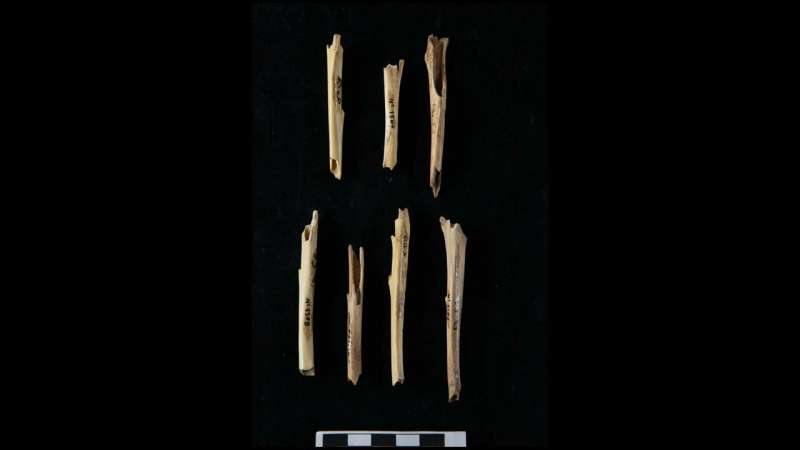Early Europeans hunted hard-to-catch small game

Fleet of foot and lean of meat, rabbits are difficult to hunt and offer little sustenance. Yet research published in Science Advances by Trent University associate professor of Anthropology Dr. Eugene Morin has shown that they were frequently part of the diet of early humans and Neanderthals in the northwestern Mediterranean as far back as 400 thousand years ago.
In New evidence of broader diets for archaic Homo populations in the northwestern Mediterranean, Professor Morin and Dr. Jacqueline Meier of the University of North Florida examine rabbit bone assemblages from eight Lower and Middle Paleolithic sites in present-day France, including Terra Amata, an open air site near Nice where they collected rabbit bone assemblage data. The site is the earliest known location that humans hunted this type of game in Eurasia.
Prof. Morin's work challenges the general consensus that small fast game hunting began during the Upper Paleolithic period, about 40,000 years ago. Their work shows that even during early Paleolithic times, humans ate a wider variety of meats than the ungulates that accounted for the bulk of their calorie intake. This finding is also significant because it means that Neanderthals were able to expand their diet in contexts of food shortage, a type of behavior that was previously believed to be exclusive to early modern humans.
"Large game like horse, bison and red deer made up the majority of the meat diet," says Prof. Morin. "But it's likely that, in the Northwestern Mediterranean region, difficult-to-catch animals like rabbits helped bridge gaps in food procurement in seasons where large animals scattered. This may have helped humans live at higher population densities than would have been possible otherwise, and could allowed more people survive periods of food shortage. Hunting rabbit might have been an efficient strategy to prolong survival, and since rabbits could be hunted by individuals or small groups, rabbit hunts might have involved different degrees of social prestige and cooperation than those that targeted larger animals."
The research also demonstrates that even during early Paleolithic times, there was geographical differentiation in diets in Europe. Hunters in the northwestern Mediterranean were likely hunting rabbits individually, which may indicate that primitive traps or snares were already in use. The research also raises questions about the significant social implications that hunting smaller game may have had.
More information: E. Morin et al. New evidence of broader diets for archaic Homo populations in the northwestern Mediterranean, Science Advances (2019). DOI: 10.1126/sciadv.aav9106
Journal information: Science Advances
Provided by Nottingham Trent University





















